»Ceauşescu didn’t shoot enough of them«, was a reply from my grandfather, an avid hunter, when I texted him from under the Poenari Fortress that our bivouac was just visited by a bear. Indeed Romania has about 6000 bears roaming its forests, which represents around 60% of all the bear population of Europe. This abundance of beautiful furry creatures has a lot to do with the era of Romanian dictator Nicolae Ceausescu. Under his 25-year rule that ended on Christmas day in 1989 he was the only one who was allowed to shoot bears (in other words, he prohibited everyone else from shooting bears). And in the meanwhile with Nicolae obviously being busy with affairs of state and shooting other animals too the bears prospered and grew in number. Even to the point where vast expanses of Romanian woods didn’t suffice and the bears started to roam the villages, towns and even cities searching for food.
Of course you could go on shooting bears, but with the expanse of tourism in general and wildlife tourism in particular the Romanians quickly calculated that bears are worth much more alive than dead. And so the Carpathian bear became one of the symbols of Transylvanian tourism.
When we started researching where and how to find bears in Romania, there seemed to be roughly three options:
- to hike the woods between Piatra Craiuli and Fagarașan mountains and hope to walk upon a bear (highly unlikely to happen)
- to go camping in those woods and maybe see the bears in the evening (we did that for several nights, but no success)
- the Stramba Valley.
Whenever you google the Carpathian bear, you will not be able to miss the mention of the Stramba Valley. Hidden somewhere in the Piatra Craiuli National Park, there lies this valley where approximately 40-60 bears live, accompanied by deer, wild boars, lynx and two packs of wolves that each contain from five to seven individuals. In a bear hide in the valley, once intended for hunting, but now for wildlife watching, you can see bears, wolves, wild boar, foxes… and of course pay for that. The National Forest Administration of Romania has the upper hand and many (eco) tourist agencies offer the package. The experience is broadly described over the internet and in western magazines in basically the same terms – in the evening go to the valley where they feed the bears daily at the hide, be quiet and observe and enjoy.

So we decided to find that beautiful valley on our own. But the location description we could find was somewhere between vague and absolutely incorrect. And of course there was no such valley marked on our Reise Know-How map of Romania or on our GPS maps. Strangely enough even Google Earth couldn’t find anything. I browsed the satellite footage of the area, checking for geo-tagged photos… nothing.
The valley was supposedly reached from Zărnești (or Braşov via Zărnești). Zărnești is a town near Bran, the Bran (in)famous for its »Dracula« castle, though historically Vlad Tepeş was maybe kept as a prisoner there for a short period of time. Stramba Valley should be somewhere in the Piatra Craiuli National Park. The Lonely Planet, which I don’t often consult, because it’s not a proper tool for overlanders, even goes so wrong that it indicates that you start the journey to the valley from the Magura village above Zărnești. And even Magura was barely found on our maps. But it was a start.
After getting a healthy dosage of Dracula in Bran we took the unpaved road to Magura. Quickly did we discover that the village, quite interesting in itself, has nothing to do with bears. Yes, the magnificient Piatra Craiuli mountains offer a beautiful backdrop, but that’s it. We spent a night there and decided to continue the next day in Zărnești.
First we bought a map of Piatra Craiuli mountains. No Stramba Valley there on the first glance. So my next move was to go to the Piatra Craiuli National Park info centre in Zărnești and ask about this mysterious valley. What resulted would have been worth of a movie. A very helpful guy that really wanted to tell me had no idea what the Stramba Valley is, even less where it is. A nice girl behind the counter got really pale at first when I started asking, and then a bit red in the face when she, the nice guy and some bystander started discussing the topic is rapid Romanian. I understood only so much that the area is supposedly closed to public and that I must not find out where it is. Following some telephone calls, a bit of internet browsing and much much more Romanian chatter, some half an hour later, after discussing various possible locations, we came to conclusion that Magura village has nothing to do with Stramba Valley. Mark this, Zărnești was supposedly the hub of bear watching in Transylvania! Somewhere along the research a name of the Transylvanian Wolf was mentioned, but without a precise contact details or location information.
But, however, much to my surprise and the objectionable looks of the girl behind the info counter, the nice guy came up with a possible location. Along the Drum National 73A, going northwest from Zarnesti, somewhere behind the village Sinca a road should lead westward to the Valea Strambeii. The information came along with a warning that I probably should not go there without a guide. They didn’t specifically say that it’s forbidden, but they were just repeating that people go there with guides. Which guide and where to get them… that was not part of the info package I received, I only got vague notions that I probably should go to Braşov and ask there. But apparently the Stramba Valley was indeed in the Piatra Craiuli NP, only on the other side of the great mountain range.
So we set on the quest. We left Zarnesti on the Drum National 73A, took photos of some storks, and did not expect much bear-wise. But after Sinca there really was a road! Junction is at N45⁰ 44.194′ E25⁰ 13.765′, and there is a crude painted sign that vehicles can only pass from the other direction.

We proceeded and were soon on an unpaved road leading over the meadows along a stream. We met a few lumberjacks, hauling wood from the valley. They all greeted us nicely. There was even some sort of fish farm and a few houses. I have imagined the famous bear valley a bit differently. Although not even GPS nor the map showed the possibility, I thought that maybe there is a path over Piatra Craiuli massif to the villages of Pestera and Magura and that maybe the proper wild and adventurous approach goes from the other direction. Well, I learned quite soon that my theory was wrong.
When the fields were gone and the forests thickened, and the slopes of the valley got steeper and higher, we met some more lumberjacks. Their little truck was parked on the narrow dirt road beside a little river, so we could not pass. We waited for them to load it and watched how the young guys were laughing. I can only assume that they laughed at the stupid lost tourists. Then one of the older guys approached. In some words he tried to explain that we should turn and head back the way we came from. His English was not good enough (there was no English actually) to explain why. We went about for some time, him trying to convince us to turn, that this is private property, me being stubborn why and whose property that is. In the end we backed a few hundred meters and set to cook lunch. During lunch their little tuck was loaded it drove down the valley with the guy who tried to stop us in it. So we set on, waved to the laughing young guys and sped along the path.
Not long after our successful breakthrough we reached a narrow bridge that crossed the stream to the opposite bank of the road. And there was a clearing in the woods and a little house, raised above the ground on the pillars. This had to be it. The famous Stramba Valley bear hide. And it was (N45⁰ 40.972′ E25⁰ 08.125′)!
Of course the clearing was empty in the early afternoon. No bears. Not even a fox. Some butterflies maybe.
I crossed the bridge and checked the clearing and the hide. It looked like the proper spot.

Because the evening was still far away we drove on along the river up the valley for some more time. Somewhere in the valley there was supposed to be a pristine 400 year old forest. The road got worse by the meter. We met some more lumberjacks (so much for the pristine forests!), even one with a fierce dog, and then soon the path ended (N45⁰ 39.429′ E25⁰ 08.274′). From there on we just did some »canyoning« as we waded the pools of the stream and climbed rocks and fallen trees along it. It was nice, the valley became nearly a gorge, the forests were beautiful, just the water was cold as hell and our feet froze. I learned from a lumberjack that hauled logs right at the end of the valley that there was no passage over the Piatra Craiuli ridge. The Stramba Valley only had one entrance.


When the time came to go back down the valley I drove slowly and we kept our eyes wide open to spot some bears, but there were none. And when we came back to the hide, there was a Mitsubishi pick-up at the clearing and a man laboring – unloading the pick-up and stuffing things, probably bear food, along the tree trunks scattered around the clearing. He got really upset when he saw our car and waved at us, indicating that we should pass on. I moved the car some hundred meters ahead and we waited. I reasoned that if the food is here, the bears should not be far. And that was when Polona saw a bear.
A huge brown beast was maybe some 20 meters away from our car, quickly moving towards the clearing. I didn’t see it, as it was on the other side of the vehicle, but Polona and Punky did. Polona was still breathing and even talking, but Punky was still as a rock and quiet as a mouse. The poor dog barely dared to breathe, and then started to shake a little bit. Polona held her and they encouraged each other. I started looking for the camera, but I was too late. The first Carpathian bear we met was already gone.
But the pick-up was already after us and the driver stepped to our car. That’s how we met Andrei.
Andrei works for the Romanian Forest Administration and is in charge of the Bear hide in Stramba Valley. At first he tried to make us leave, but I insisted that he told me about the bear hide, how it is used for watching and not shooting bears, and in the moment he started talking about money, I knew I had him. He told me a group of tourists from Brasov is coming and that I can tag along for 25€.
25€ is a lot of money in Romania, but to go see ursus arctos in the wild? I was willing to pay.
Polona decided that she had enough bears already, so she drove the Toyota with Kea Pika and Punky to the exit of the valley. I went with Andrei, now carrying a hunting rifle on his shoulder, and the group of German tourists to the hide.
Even before we reached the hide three bears were already feasting on the food Andrej brought for them. They hid back to the forest when they saw us coming.
We settled in the hide and the bear show began.
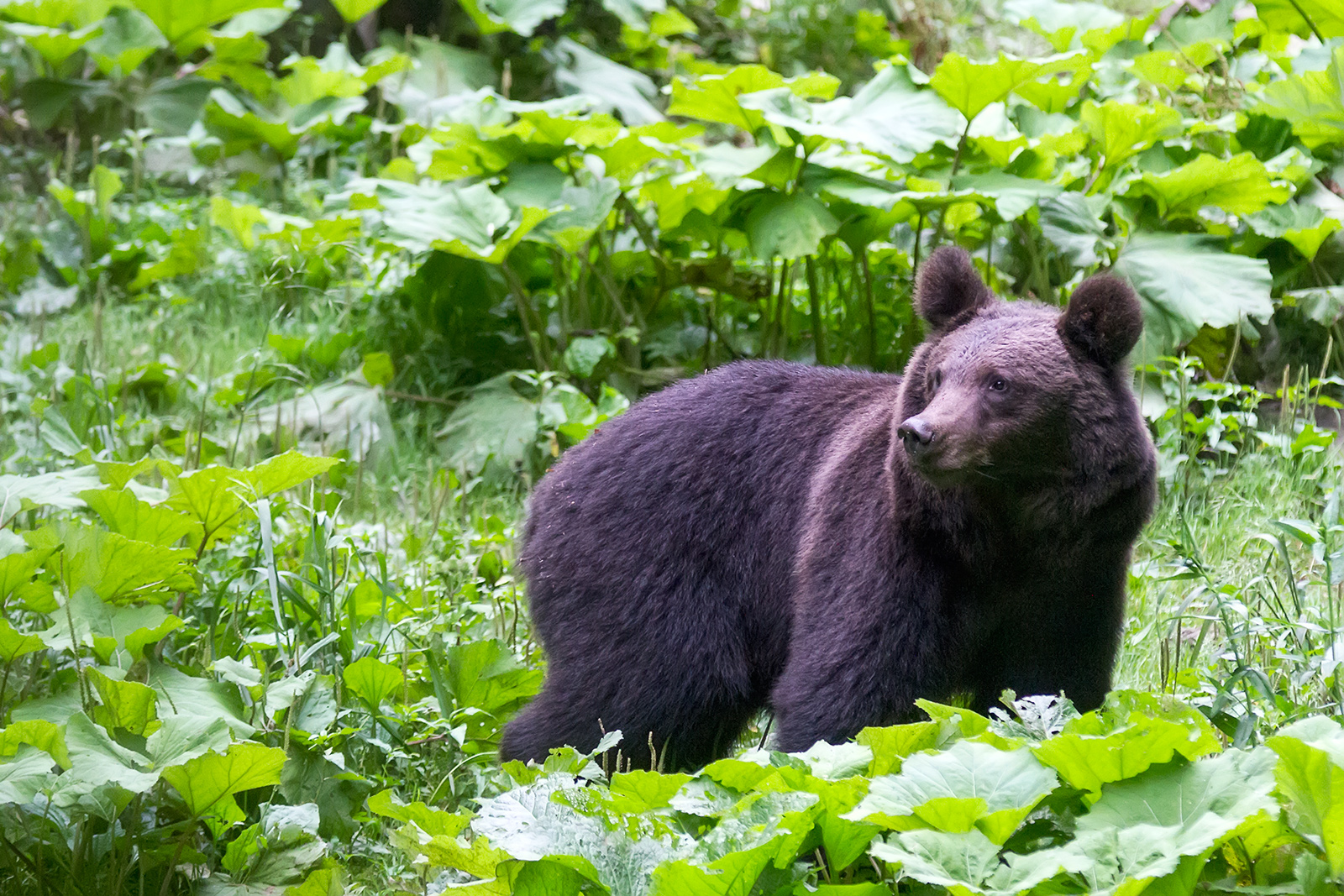
There were three to five bears at the clearing at the same time, even a mother with a six month old baby bear, looking for food, exploring, eating. As Andrei explained, this was the »fruit day«. The bears adore fruit, so they stayed at the clearing for a long time. Andrei knew all the bears, not actually by name, but by age, sex and parentage in some cases.

The bear hides are an ancient technique for observing and hunting bears. The one on Stramba Valley exists for many years, but in the last two it is used only for observation. They don’t shoot bears in the valley anymore, they are more valuable alive. The present count of bears in the valley was 46. Despite lumberjacks with their dogs and tractors.
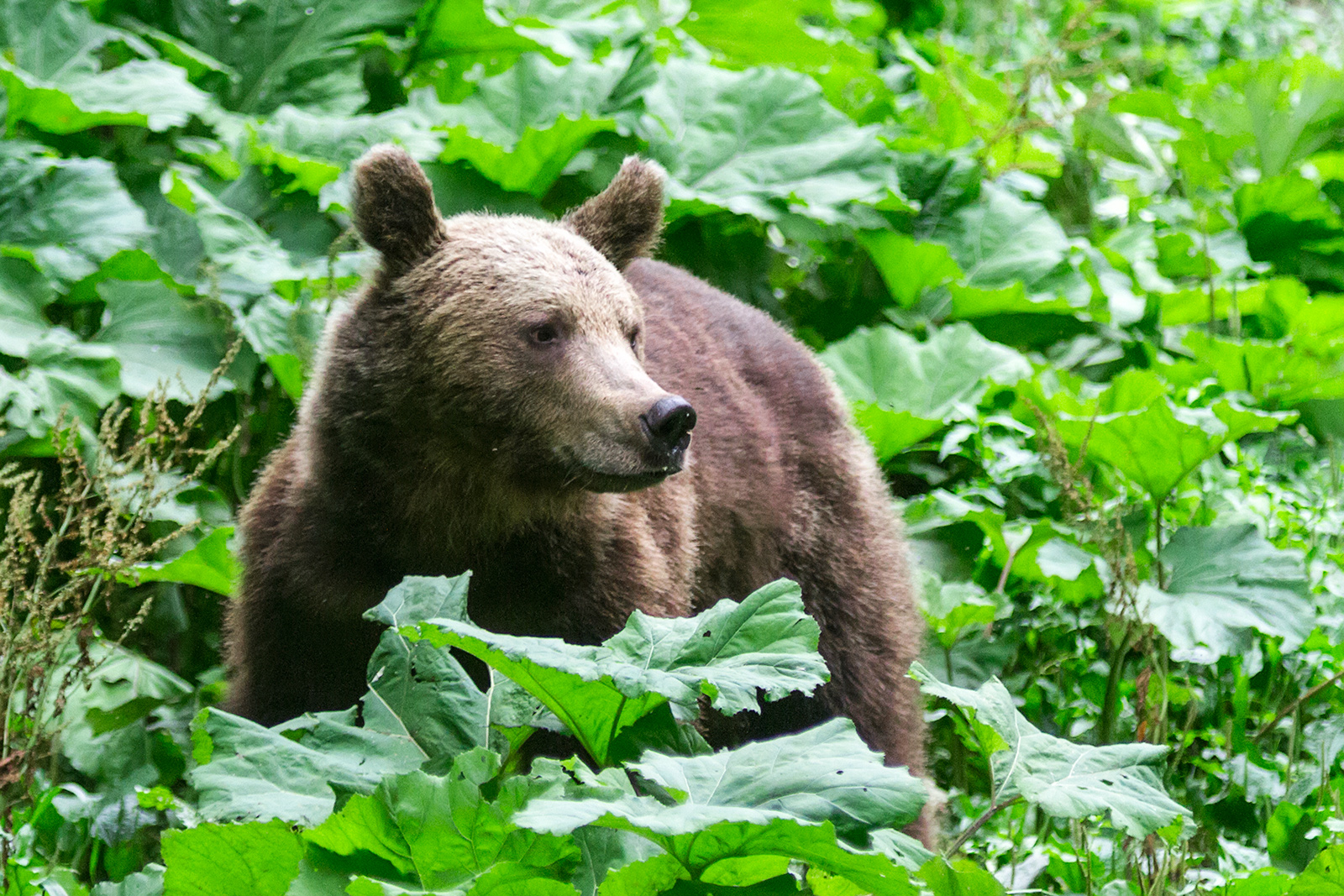
For two hours the bears roamed the clearing, searching for food, eating, playing. Some of the younger bears were quite comical to watch… of course from a safe distance of the bear hide. The microphone hidden in one of the logs at the clearing transmitted the bear voices to the hide, so we could listen to them growl.
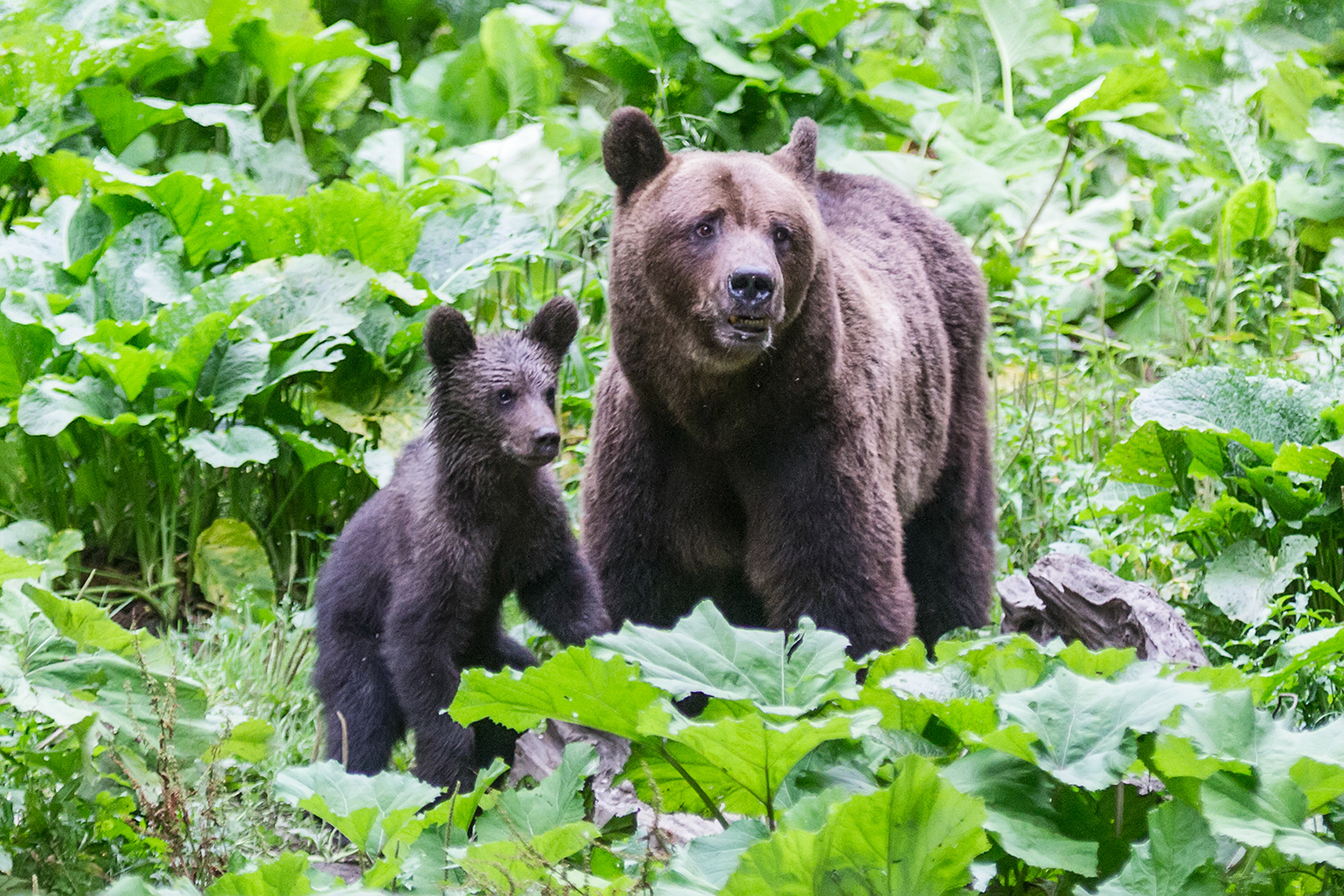
The bears in the wild need to eat up to twenty kilograms of food per day, mostly vegetarian. The food brought to the clearing at the bear hide is not even nearly enough for them to survive on, but as it is easier to get, the bears prefer it. Mostly they get old bread, once a week comes the fruit day, and the meat is only served once or twice a month. On the meat day you can observe foxes, wild boars and sometime wolves. Two packs of wolves roam the broader territory of the Stramba Valley and can be observed if you are lucky. The presence of the beautiful wild feline, the evasive lynx, is only revealed through the traces and tracks it leaves. Andrei admitted that in all of his time in Stramba Valley he only saw the lynx twice, and even that by mere coincidence.

Andrei brings food to bears every day during most of the year, only during winter hibernation the bear hide gets some rest. The feeding prevents bears from searching for food outside the valley, especially in villages and at garbage dumps, he says. And the income from tourists is a big bonus too. In the warmer months, from May to October, rarely a day goes by without tourists visiting the bear hide, and the Stramba Valley hide is just one of the many bear hides around the city of Braşov. Andrei explained all that and even more as we left the hide and he drove me in his deteriorating Mitsubishi pick-up to the valley exit where Polona, Kea Pika and Punky waited for us.
Andrei and I parted as friends. But still he made sure we left the Stramba Valley and drove back towards Zarnesti.
But the Stramba Valley was not the last we saw of bears in Romania. On the next day we visited the Libearty Bear Sanctuary (N45⁰ 35.597′ E25⁰ 23.442′) near the town of Zarnesti. With the abundance of bears in Romania and an appalling cruelty and ignorance of people there were and still are a lot of captive bears in the country, serving as circus animals or tourist attraction near restaurants, shops or famous sightseeing spots. The Sanctuary tries to save those bears and give them a better future. Spreading over 69 hectares of land, the Sanctuary now homes 98 bears, 7 wolves and many many stray dogs. Each bear has its heartbreaking story of human cruelty, neglect and ignorance, but maybe the saddest part of it all is the fact that all those bears, because of human interference with their lives, can never be reintroduced into the wild. However big the 69 hectares of the Sanctuary may appear, they are all that those bears have left. At least they’re not confined to cages any more. The efforts of the Libearty Bear Sanctuary team are well worth the 40 RON (about 10€) you have to pay for a guided tour. Even Kea Pika, being only eight months old, had to pay 10 RON, but did so gladly.

This is not yet the end of the bear story. In the evening of the same day we visited Bear Sanctuary we set up camp under the famous Transfagarașan road near the Poenari Fortress, the real castle of (in)famous Vlad Tepeş (N45⁰ 21.118′ E24⁰ 38.244′). The girls were already in bed as I still sat at the table arranging my travel notes. The camping place was quite full of travelers despite not being an actual camp. Earlier in the evening some village dogs came to sniff us so I wasn’t surprised at all when I heard some noise in the bush nearby. I thought that the dogs returned, I just didn’t know why Punky is so quiet. I lifted the beam of my head lamp and then I saw the creature making the noise. At first I thought that it’s quite a big and weird dog. But there was something wrong with it. It didn’t have a tail. And the posture was not doggish at all. And the head was different too. It took me a while to realize I was looking directly at the eyes of a bear standing maybe 8 meters away from me.
I rushed to the car to get the powerful Maglite torch and the bear which apparently came to see if there is some food in the garbage cans of the camp rushed to get away from a moving human. It ran away and over the stream and then up to the forest. For some time I could track its movements in the beam of my torch. For me it was an exciting encounter and I hope it was not too stressful for the poor hungry bear.

The bottom line – oh yes you can fairly easily see brown bears in Romania, either in the Sanctuary or in the organized safety of the bear hides around the city of Braşov. Or you could get lucky and the furry creature visits you when you least expect it. But I would not recommend visiting the bear populated areas and then exposing your trash because the bears might be tempted to visit. During our lunch break at horribly soiled shores of Lake Vidraru as described here Punky, though hidden safely in the Toyota, expressed the same behaviour as when seeing a bear in the Stramba Valley. I am quite convinced that the animal was hiding nearby, attracted by the leftovers of food, and just waiting for the annoying people to leave and the night to come. Night of the feast.







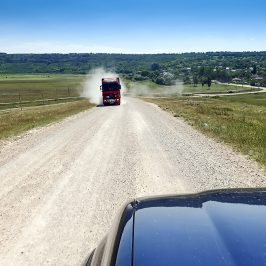
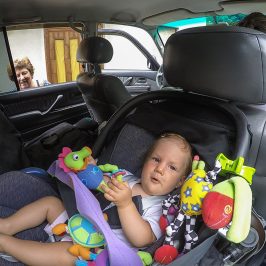


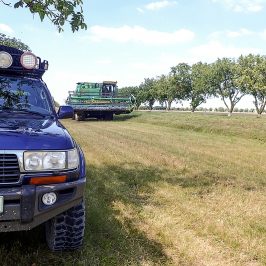
Johny Jackson
Great article. I am experiencing many of these issues as well..
Johny Jackson
I do not even know how I finished up here, but
I believed this post used to be good. I don’t recognize who you are however definitely you are going
to a famous blogger if you aren’t already. Cheers!
Katia Ellyson
I just got done eating a platter of spaghetti before visiting your site. It sure makes the full feeling all that much better.
Grizzly vildlakseolie
Enjoyed every bit of your blog article.Much thanks again. Really Cool.